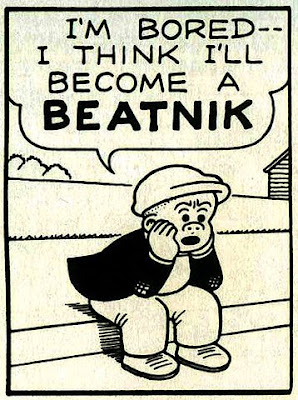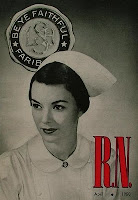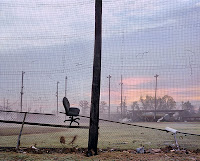
 HAITI: The Serpent and the Rainbow
HAITI: The Serpent and the Rainbow by Wade Davis ~ In 1982, ethnobiologist Wade Davis arrived in Haiti to investigate two documented cases of zombis - people who had reappeared in Haitian society years after they had been officially declared dead. Drawn into a netherworld of vodoun rituals and celebration, Davis' investigations resulted in his placing the phenomenon of zombification in its proper context, as well as in his eventual realization that the story of vodoun - from its African origins to its contemporary practices - is the story of Haiti itself.
The author steeps himself in the search, and at times one can't help but wonder about a curious kind of name-dropping and hints of intimate links to those about whom he writes. In particular, is the recount where he extols his horse riding skills with a battalion of mountain cavalrymen. More chilling, his brief reference to the psychiatrist and infamous CIA torturer
Ewan Cameron, That said, the book is a quick, energetic read while traveling through dark little-known corridors of the mind.
The book provides an extremely detailed picture of parts of Haitian society, strips away many Western misconceptions of vodoun, offers a wealth of fascinating information on toxicology, botany, modern world history, religion, occultism, and the psychology of death amongst various cultures, and blends it all together with the central tale of Davis' search for the zombification agent, resulting in what amounts to a travel narrative-cum-tale of high adventure.
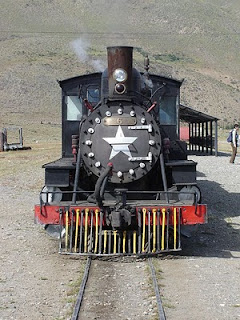
 SOUTH AMERICA: The Old Patagonian Express
SOUTH AMERICA: The Old Patagonian Express by Paul Theroux. ~ An account of a train journey that begins in Massachusetts, via Boston and Chicago, Theroux travelsacross North America to Laredo, Texas. Once across the border, another train south through Mexico to Veracruz. There he meets a woman looking for her long-lost lover. Then to Guatemala and El Salvador where he goes to a soccer match and is amazed by the violence.
Stymied by political upheaval he flies to Costa Rica where he resumes the train to Limon and Puntarenas. He ended his transit of Central America in Panama where he takes the short train ride across the isthmus.
Then to Colombia and over the Andes, making pilgrimage to the oxygen depleted atmosphere of Macchu Picchu before and finally reaches distant heart of Patagonia, the small town of Esquel.
He endures harsh climates, including the extreme altitude of Peru and the Bolivian Plateau, meets the famous author Jorge Luis Borges in Buenos Aires and is reunited with long lost family in Ecuador.
Theroux is an excellent descriptor of place and person. His visits with Jorge Luis Borges made me wish I could have been there; likewise his recounts of the vast empty stretches of Patagonia.

 THE MIDDLE EAST: The Way of the World
THE MIDDLE EAST: The Way of the World by Nicholas Bouvier. translated from the French by Robyn Marsack ~ You may not have heard of Swiss-born Nicolas Bouvier if you live west of the English Channel. Yet on the European continent Bouvier was Switzerland's answer to Jack Kerouac. He wrote mainly in French, a cult travel writer whose books sell by the pallet-load, even though he died more than a decade ago.
His father encouraged him to travel and in 1953, without waiting for the result of his degree, he left bourgeois Switzerland with no intention of returning. In a small, slow Fiat, he and his friend Thierry Vernet - whose stark illustrations are reproduced in the book - traveled across Europe and Asia over nineteen months, pausing in Belgrade, Istanbul, Tabriz and Quetta to paint, write and wait tables, taking longer than Marco Polo - as Bouvier proudly pointed out - to reach Japan.
Along the road no sensational, headline-grabbing event befell them. They were not attacked by Baluch bandits or held hostage by an Afghan warlord.
The Way of the World elevates the mundane to the memorable and captures the thrill of two passionate, inquisitive travelers discovering both the world and themselves. Racy and meditative, romantic and realistic, the book is as brilliant and as alive as Kerouac's On the Road, though without a whisper of self-aggrandisement.
I found a copy of the book on a free-take-me rack at the West Haven VA Hospital. Would have been worth paying for it.
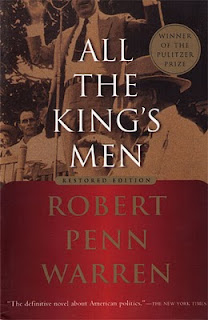
 LOUISIANA: All the Kings Men
LOUISIANA: All the Kings Men by Robert Penn Warren ~ If you don’t have a molasses-slow, deep southern voice narrating
All the King’s Men in your head when you read it, put it down and start again. This Pulitzer Prize-winning novel is based on the larger than life Governor of Louisiana, Huey Long. Like Gatsby’s Nick Carraway, everyman Jack Burden [
a callous, corrupt and cynical newspaperman] tells the story of Willie Stark, a southern politician who will say whatever it takes to get a vote, but makes most of his decisions in back room deals.
Robert Penn Warren, Kentucky born and Tennessee educated, poet, professor, critic and novelist, is a Southerner who hates the shortcomings of the South, as do so many Southern writers. But he writes about such shortcomings with an eloquence and an elemental rage worlds apart form the sordid bitterness of some of his literary colleagues.
There is something about Huey, his combination of magnificent abilities and a genuine if primitive idealism with bottomless corruption and lust for power, which fascinates the literary as well as the political mind. Here was a man who destroyed the democratic structure of an American State while shouting his championship of the common man. How significant and how representative was he? How serious is the threat of his kind? I could not help but be reminded of today's Tea Party "movement", with slick politicians hiding their anti-populist beliefs, behind the Gadsden Flags. Indeed!
My partner says he couldn't put the book down; he is definitely one of those readers who kept going to 3 am only to arise the next day and pick it up, reading again.
We read the newly restored version. Parts of the tale that Penn Warren wanted but didn't get from his editors, were returned. The tale - in addition to being an uncomfortably intimate view of how a populist can become incredibly corrupt - is a thick morass of poetic imagery and style. One can easily see why Penn Warren is the only writer to get the Pulitzer Prize for both fiction
and poetry.

 VIETNAM: These Scars are Sacred
VIETNAM: These Scars are Sacred by Elliott Storm ~ This was an unexpected find; at the manager's counter of a Shop Rite a block or so from the West Haven VA. For me it was one of those books I couldn't stop reading. Elliott Storm, a 100% disabled Vietnam combat veteran, struggled with the ‘inner demons’ that veterans shared coming home from an unpopular war. This book is his recount.
He wrote the book intending a personal catharsis but the result was entirely unexpected. The
blurb on a website promoting the book says "
THESE SCARS ARE SACRED now helps others understand, and in many cases regain, a level of trust needed to bridge the gap of pain caused by Post Traumatic Stress Disorder."
Storm writes with an intensity that makes it difficult to avoid being with the protagonist while he watches his mates get shot down before him as they fight to re-take a hill in The 'Nam that the brass in DaNang sagely sat back and let them do it.
Storm is every bit as descriptive in his narration as the other four - much better known - authors cited here are. His battle scenes are afire with a searing clarity. And the insights shared still show how warriors, albeit on opposite sides, are able to grant one another begrudging respect, even as they are faced with the inevitability of only one surviving a skirmish, scarred though alive.
But it isn't just the bloody battle front he tells you about. He speaks with passion about the psychic battle scars; of cheating spouses; of civilians - as well as stateside insulated textbook fighters - who completely fail to grasp what the latter scars do when left unable to heal.
This last book on the list differs from the others in that it is newly first published. The tale - and the message - is timely as men and women return home from war zones, ill prepared to acclimate back into civilian life; yet legitimately seeking a chance for refuge in therapies that are under funded and with limited availability for signing up into. [Combat weary Vets who hope to gain access into the VA's inpatient PTSD program at Northampton MA, for example, can expect to wait between 3 to 6 months.]
The other books you can find through the library. Elliot Storm's book?
Well, try getting a copy online.









